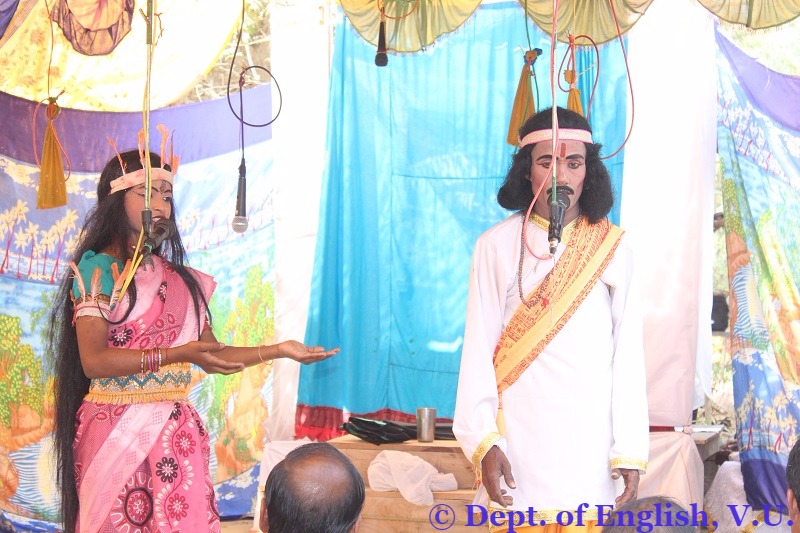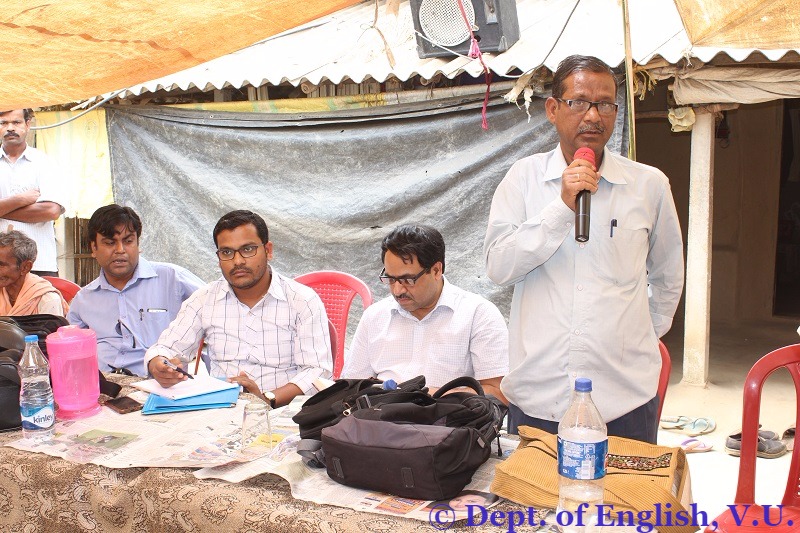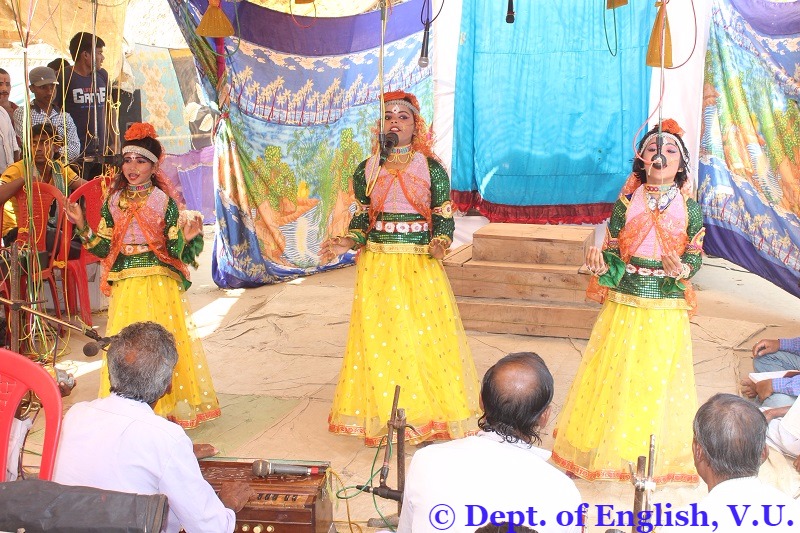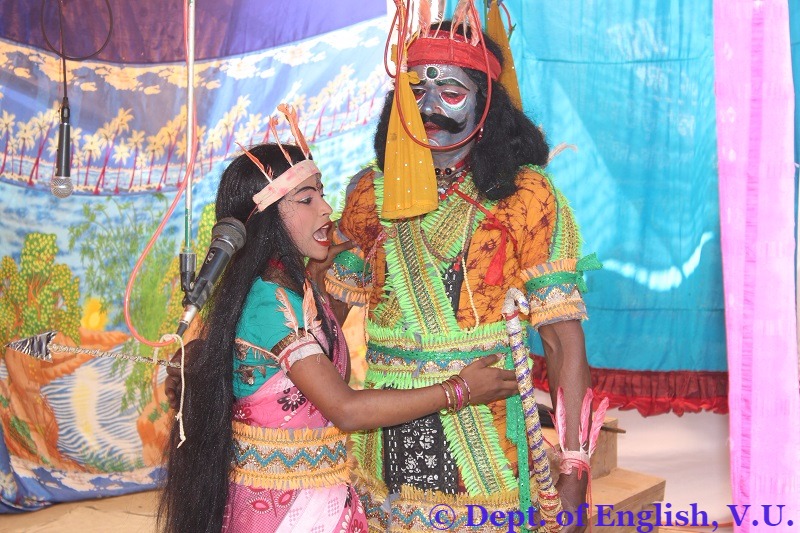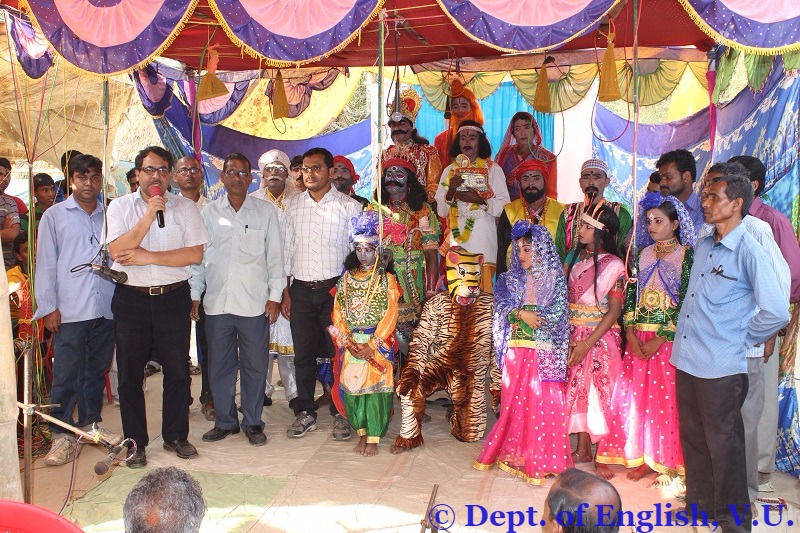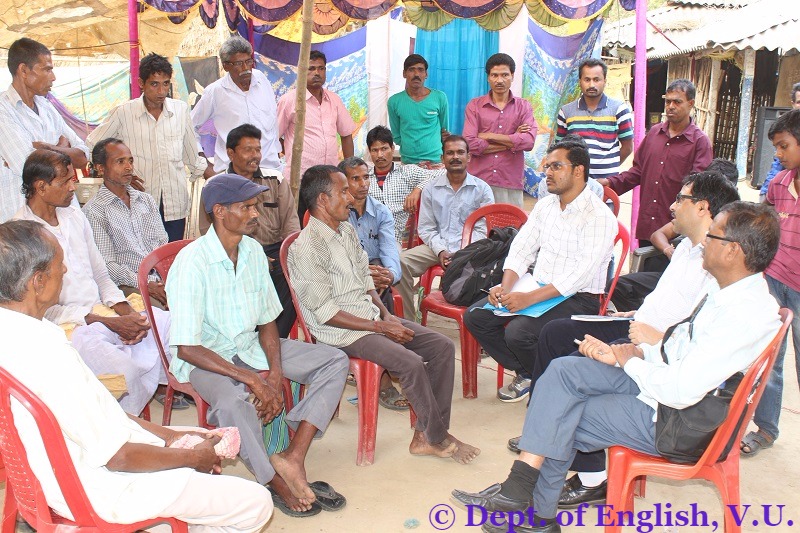Dublin Core
Title
Subject
Description
The Lalita Shabar Pala is the endangered folk representative text of the Kheria Sabar community. The Kharia Shabars are the inhabitants of the western part of West Bengal. They are concentrated in Jhargram, Midnapore, Bankura and Purulia.
The Lalita Shabar Pala revolves around the plot of Lalita, the “Shabar duhita” and her marriage with the Brahmin priest Bidyapati. This pala is performed in the Odia language, though the play is written in Bengali script. The king of ‘Angyadesh’ Indradumnya sends Bidyapati in search of Lord Vishnu’s effigy. When Bidyapati enters the deep forest of western Bengal, he sees the ‘Shabar kanya’ Lalita and falls in love with her. Lalita gets pregnant and her father Basu Shabar asks Bidyapati to marry her. But Bidyapati refuses to do so as he is a Brahmin, and the Shabars are a lower caste. Bidyapati then narrates the glorious history of the Sabars and their connection with Lord Krishna. Bidyapati marries Lalita. But when he comes to know that Basu Shabar possesses the Vishnu effigy which the king is looking for, he tricks Lalita and informs the king about it. The king comes to the jungle but cannot find the effigy and arrests Basu Sabar.
The play shows Brahmins as intruders and usurpers in Shabar culture. The play is said to be written by Damudas but it is not clear who this person actually is and when this play was actually written. This folk drama has many elements in it which inform people about the various ethnic aspects of Shabar culture.
The Shabars are now divided into multiple clans. The chief among them is Lodha Shabars.
The Shabars were one of the most prominent indigenous people of India who dominated the hills and forests of the Vindhyas and were spread in different clans under the valiant rule of sovereign chieftains in the deccan regions of Dandakaranya and in the wooded areas of Orissa and Bengal. They were such a formidable power that the Aryan invaders failed to subjugate them by force and had to perforce take recourse to befriending them before they could advance to places farther south and east of the country. Proof of it is borne by the Vedas; the epics, the Ramayana and the Mahabharata; Puranic myths; chronicles of Pliny and Ptolemy; treatises by Banvatta; and numerous other folkloric and historical materials.
The sacred myths that canonized the Brahmanic cults of Gods and Goddesses had interestingly acknowledged the piety of the Shabars and the predominance of their faith in deities, who in many cases were appropriated by the Vedas. For example, among all the legendary tales sanctifying the seat of Lord Juggernaut of Puri the belief in the Shabar god takes pride of place. According to the Roman historian, Herodotus, the word “Shabar” comes from the Scythian word “Sagris”, meaning the axe, which is the primary instrument used by all sects of the Shabars. The sounds “g’ and “b” being interchangeable in dialectal English, in course of time “sagris” came to be known as ‘sabar’ or “Shabar”. The Lodhas constitute the principal sect of the shabars, who have got their name from the Sanskrit word “Lubdhak”, meaning trap or snare that these people used for hunting animals and birds. During the colonial period, it became part of a colonial design to stigmatize these people as belonging to a criminal sect for the mighty resistance they put up against British imperial ambitions in the south and eastern part of the country.
Creator
Source
Publisher
Date
Contributor
Sukumar Chanda: 8001268623

